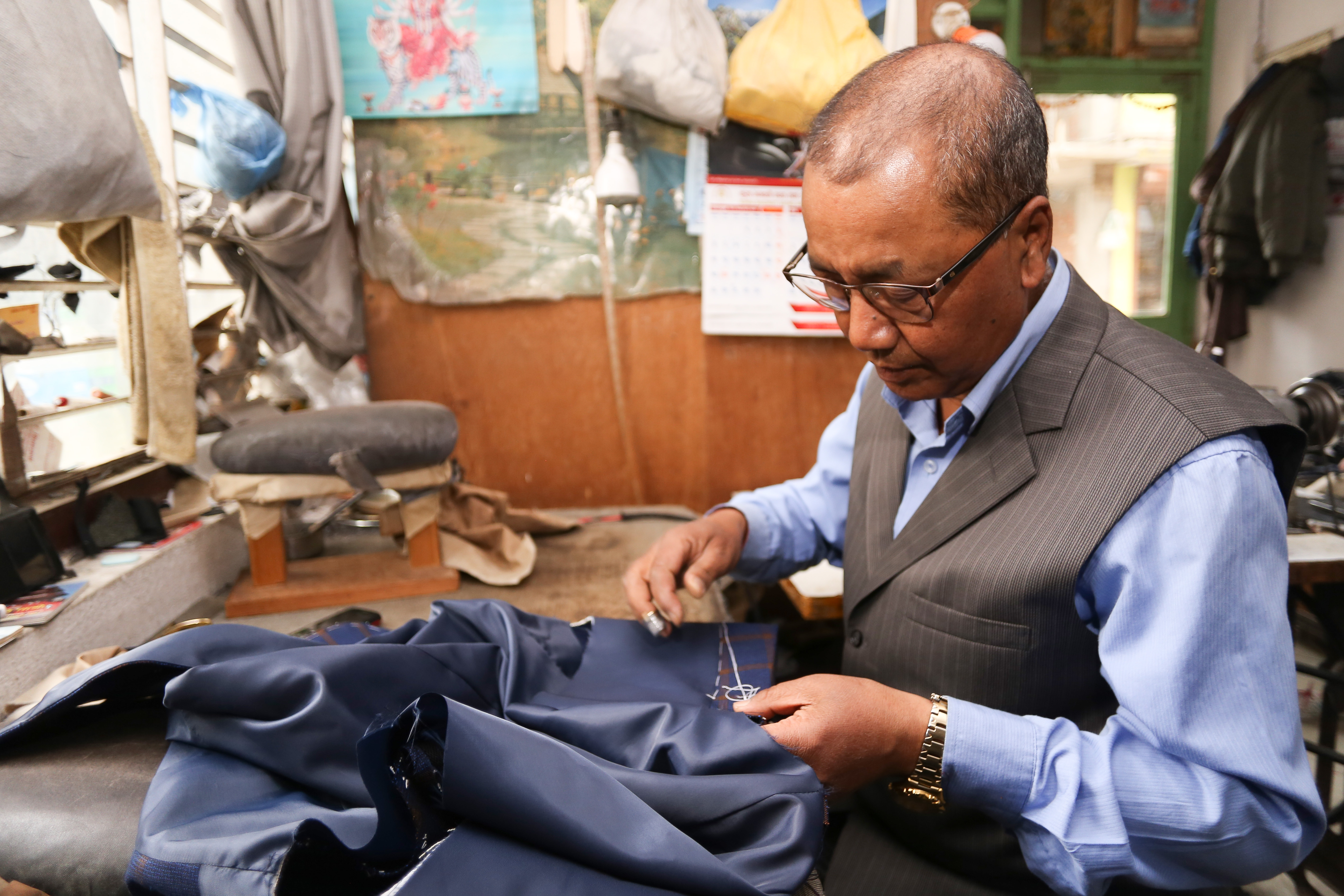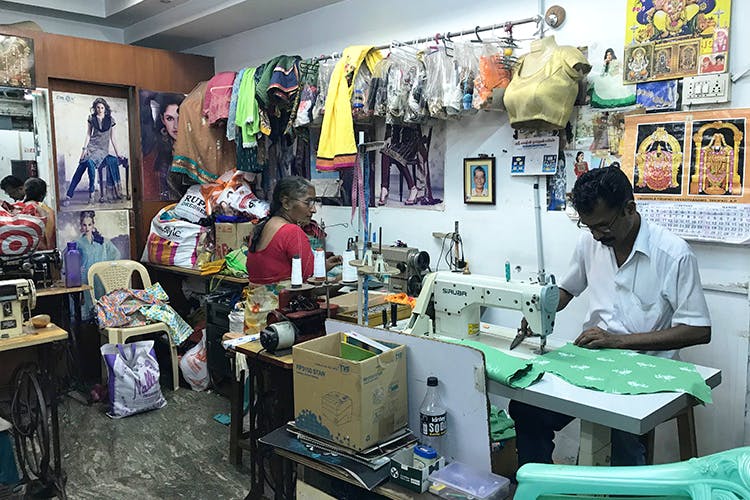Tailor Perth Professionals: Boost Your Fashion with Custom Tailoring
Tailor Perth Professionals: Boost Your Fashion with Custom Tailoring
Blog Article
Comprehending the Tailoring Refine: From Textile Option to Last Fitting for the Suitable Wardrobe
The customizing process is a complex interaction of art and science, starting with the vital choice of material selection and culminating in the exact modifications of last fittings. Each textile type brings unique top qualities that affect not just the visual allure but additionally the garment's durability and suitability for different events.
Value of Fabric Option
Selecting the right material is crucial in the tailoring procedure, as it directly affects the convenience, toughness, and total aesthetic of the final garment (tailor perth). The choice of textile sets the foundation for the garment's design, efficiency, and functionality. Different materials have special buildings, such as weight, stretch, and breathability, which can dramatically influence exactly how the garment drapes and fits the body
Additionally, textile selection impacts the garment's longevity and ease of care. Premium materials can hold up against wear and tear, maintaining their appearance and framework with time, while lower-quality products might bring about pilling or fading. In addition, the appropriate textile adds to the garment's capability to change throughout periods and events, thus boosting versatility.
A customized item made from a proper material not only showcases craftsmanship but additionally boosts the wearer's confidence. Understanding the nuances of fabric selection is vital for any kind of customizing undertaking. It guarantees that the end product not just satisfies the aesthetic needs of the client but likewise aligns with functional needs, thereby accomplishing a harmonious balance in between type and feature in the tailored closet.
Kinds Of Fabrics and Their Uses
Understanding the numerous sorts of materials available is essential for making notified choices during the customizing procedure. Each material possesses special qualities that determine its suitability for certain garments and occasions.
Cotton, recognized for its breathability and softness, is ideal for sportswear and summer season clothes. Its versatility enables it to be customized into whatever from t shirts to dresses. Woollen, on the other hand, is preferred for its heat and framework, making it an outstanding option for official suits and outerwear - tailor perth. Its natural elasticity aids garments maintain form over time.
Silk exhibits luxury and is lightweight, making it best for eveningwear and fragile blouses; nevertheless, it calls for mindful handling as a result of its fragility. Linen, with its distinctive coating, is a preferred selection for cozy environments, providing a airy and crisp feel, however it wrinkles quickly, which may affect the garment's appearance.
Synthetic materials, such as polyester and nylon, offer durability and resistance to wrinkles, making them ideal for everyday wear and active clothes. Comprehending these material types and their residential or commercial properties enables for better decision-making, ensuring that each customized item not just fits well however also lines up with the desired objective and occasion.
The Tailoring Strategies Clarified
The art of customizing depends on a range of techniques that change fabric right into well-fitted garments. Central to this procedure is pattern composing, where a dressmaker produces design templates based on the customer's measurements and wanted style. This initial action ensures that the garment will certainly fit the user effectively before any reducing happens.
Once patterns are established, reducing methods enter into play. Accuracy is critical as inaccuracies can lead to misfitting garments. Tailors frequently use numerous cutting approaches, such as single-layer reducing for complex styles and multiple-layer reducing for effectiveness on basic patterns.
Basting his explanation is an additional crucial strategy, permitting tailors to temporarily sew fabric pieces together for an initial installation. This technique offers the chance to evaluate the drape and overall silhouette prior to final sewing.
Seaming techniques, including flat-felled seams and French joints, improve the garment's toughness and aesthetic allure. Tailors also utilize strategies such as interfacing and padding to give structure and form to specific areas, like shoulders and collars.
Finally, ending up techniques, consisting of hemming and side finishing, make sure the garment's long life while offering a refined look. Together, these methods create the foundation of effective customizing, resulting in exquisite, tailor-made clothing.
Suitable Changes and Considerations

Trick considerations consist of the shoulder fit, which needs to neither droop nor restrict activity, and the sleeve length, which need to permit comfortable arm motion while maintaining a sleek look. In addition, modifications at the waist can fine-tune the silhouette, with options to allow out or take in textile as required.
The rise of pants is one more essential variable; it must sit comfortably over the hips without causing discomfort, enabling ease of activity. Hemming sizes for both trousers and skirts should reflect the user's favored design while appreciating percentages.

Keeping Your Tailored Attire
Always follow the care tag directions, which might suggest dry cleaning for fragile textiles or maker cleaning for more resilient materials. Stay clear of constant laundering, as this can use down the textile and modify the garment's form.
Storage is equally vital; usage padded wall mounts for coats and coats to maintain shoulder structure, and store trousers folded up neatly or his comment is here hung to stop creasing. Shield garments from straight sunshine, which can discolor colors and damages fibers.
In addition, periodic inspections for minor repair work can protect against bigger problems. Check for loosened buttons, tearing seams, or indicators of moth damages, dealing with these problems without delay to preserve the garment's integrity.
Last but not least, take into consideration seasonal turning. Using customized pieces in small amounts enables fabrics to recuperate, expanding their life expectancy. By implementing these upkeep techniques, you can make certain that your tailored garments continue to be as beautiful as the day you initially wore them, boosting your suitable wardrobe for several years to come.
Verdict
The customizing process, including textile choice, skilled methods, and specific fitting modifications, plays a crucial function in developing garments that enhance both comfort and design. Each phase contributes to the general performance of the final item, making sure that clothes not just fits well yet also shows specific identification. Moreover, recognizing the relevance of upkeep expands the life of customized garments, strengthening their value in a well-curated closet. An extensive technique to customizing finishes in a confident and refined look.
Picking the ideal textile is critical in the customizing process, as it directly influences the convenience, durability, and total visual of the last garment. The choice of fabric sets the foundation for the garment's performance, capability, and design. Different fabrics possess unique homes, such as weight, stretch, and breathability, Recommended Reading which can dramatically impact how the garment drapes and fits the body.
The art of tailoring depends on a selection of strategies that transform fabric into well-fitted garments.The customizing process, encompassing material choice, skilled techniques, and specific fitting adjustments, plays a crucial duty in producing garments that boost both comfort and design.
Report this page